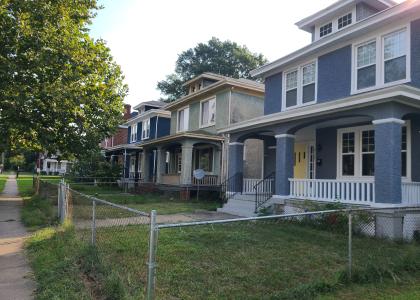Each step of a home improvement project requires the right tool. If you are planning to put up a new set of cabinets, for example, the first step requires measuring tape, assembly of the cabinets may require a drill, and then, finally, a hammer would be needed to actually mount them. A variety of tools—the right tools—are needed to complete the task.
This logic is no different when applied to the planning, design, and implementation of energy efficiency policies. Tools can provide localities with the know-how to advance energy efficiency throughout their communities. Policymakers, for example, can be tasked with assessing what energy efficiency policies make the most sense for their community, or with identifying which local stakeholders they should engage. The extent to which communities are equipped to readily answer those questions will vary; yet, all communities stand to benefit from learning about effective policies and strategies being implemented across the country. With the addition of some new resources, ACEEE hopes to expand communities’ toolboxes and provide the tools that help them achieve lasting energy savings.
The New and Improved LEEP-C
The Local Energy Efficiency Policy Calculator (LEEP-C) is a decision making tool for local policymaking. It estimates the impact select public and residential buildings policies have on energy savings, cost savings, pollution, and other outcomes. We have upgraded the original tool (v. 1.0, released in 2011) to include measures in the commercial building and transportation sector. Version 2.0 is being released as an open beta version, so ACEEE welcomes any feedback users have on the tool.
LEEP-C is not a panacea for energy efficiency planning. The projections provide a beginning to a much more in-depth analysis of potential policies. But, it can serve as a resource for communities planning to advance energy efficiency policies, including building retrofits and combined land use, to name a few. The tool’s value centers on its ability to incorporate a wide range of inputs, such as population, priorities, goals, and financing, when estimating policy impacts.
It is important to remember that LEEP-C is just one tool in the toolbox, and ACEEE has a variety of other tools to aid local policymakers in other steps involved in adopting energy efficiency policies and programs, which can be found in our Local Technical Assistance Toolkit.
The New Local Government-Utility Engagement Strategies Fact Sheet Series
We have also released new resources on Local Government-Utility Partnership Strategies that expand our local toolkit. The four webpages outline strategies and best practices for local government-utility engagement to expand or improve energy efficiency in communities. Together, these resources demonstrate the mutual benefits of energy efficiency partnerships to cities and utilities. Each page focuses on a different engagement strategy that can be adapted to meet the specific needs of the communities that use them. The partnership strategies that are in this toolkit include:
- An Overview of the Benefits of Local Government-Utility Partnerships
- Partnerships for Increasing Participation in Utility Energy Efficiency Programs
- Partnerships for Facilitating Access to Community Energy Usage Data
- Partnerships for Reducing Energy Use in Public Outdoor Lighting
We document the ways in which communities and their utilities benefit from energy and cost savings coming from increased participation in energy efficiency programs, installation of highly efficient LED streetlights, and better understanding of community-wide energy usage. It’s a win-win for local governments and the utilities that serve them. Cities gain additional resources to help meet their energy goals, while utilities achieve greater customer satisfaction, more program participation, and higher energy savings to further their policy objectives.
Future Resources
ACEEE has developed the resources on local government-utility partnership strategies to meet communities’ needs for more information about the topic. Our goal is to continue developing valuable policy resources for communities, so we want to hear ideas directly from you on how we can best do that. Are there other areas of energy efficiency policy for which your community needs assistance? Or are there other specific resources that would help your community implement efficiency policies? Feel free send your thoughts to David Ribeiro, dribeiro@aceee.org.
Michael Jarrett contributed to this blog.




